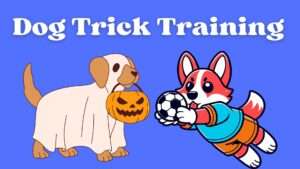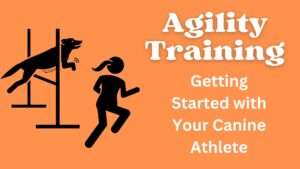Are you tired of your dog ignoring commands or exhibiting undesirable behaviors? Training your furry friend can be both rewarding and challenging. Whether you’re teaching basic commands or addressing behavioral issues, effective training is essential for a happy and well-behaved canine companion. In this comprehensive guide, we’ll delve into the world of target training, a versatile and effective method to teach your dog new behaviors and improve their obedience. Let’s explore everything you need to know about target training for dogs.
Contents Overview
What is Target Training?
Target training is a positive reinforcement technique where a dog learns to touch a specific object, usually with their nose or paw, in response to a cue. The “target” can be anything from a stick to a plastic lid or even your hand. This method is based on the principles of operant conditioning, where desired behaviors are reinforced through rewards, typically treats or praise.
Benefits of Target Training
- Clear Communication: Target training provides a clear and consistent way to communicate with your dog, as they learn to associate the target with specific actions.
- Versatility: It can be used to teach a wide range of behaviors, including sit, stay, come, heel, and even more complex tricks like spinning or fetching specific objects.
- Engagement: Target training engages your dog mentally and physically, providing mental stimulation and preventing boredom.
- Problem Solving: It encourages problem-solving skills as dogs figure out how to earn rewards by touching the target.
Getting Started with Target Training
Supplies Needed:
- Target Object: Choose a target object that is easy for your dog to see and touch. It could be a stick, a clicker, a plastic lid, or even your hand.
- Treats: Use small, tasty treats that your dog loves. These will serve as rewards for correct responses during training.
Steps:
- Introduce the Target: Show the target object to your dog and let them sniff it. If your dog shows interest, mark the behavior with a clicker or a verbal cue like “yes” and reward them with a treat.
- Touching the Target: Hold the target near your dog’s nose. When they show any interest, move the target slightly so they touch it with their nose or paw. Again, mark the behavior and reward.
- Repetition and Reinforcement: Repeat the process, gradually increasing the distance between your dog and the target. Continue to reinforce the behavior with rewards.
- Adding Cues: Once your dog consistently touches the target, add a verbal cue such as “touch” or “target” right before presenting the target object. Eventually, your dog will associate the cue with the action.
- Generalization: Practice target training in different environments and situations to generalize the behavior. Start in a quiet room with minimal distractions and gradually progress to more challenging environments.
Advanced Applications of Target Training
Target training can be applied to various scenarios beyond basic obedience. Here are some advanced applications:
- Agility Training: Teach your dog to navigate agility courses by targeting specific obstacles or markers.
- Behavior Modification: Target training can be used to address behavioral issues such as fearfulness or aggression by redirecting focus and building positive associations.
- Service Dog Training: Service dogs can be trained to target objects to assist individuals with disabilities, such as opening doors or turning on lights.
Bottom Line
Target training is a powerful tool in the dog owner’s arsenal, offering a versatile and positive approach to teaching new behaviors and addressing behavioral challenges. By implementing the steps outlined in this guide and remaining patient and consistent, you can cultivate a strong bond with your canine companion while positively shaping their behavior. So, are you ready to embark on the journey of target training with your furry friend? Get started today and watch as your dog learns and thrives with each successful touch!





























+ There are no comments
Add yours